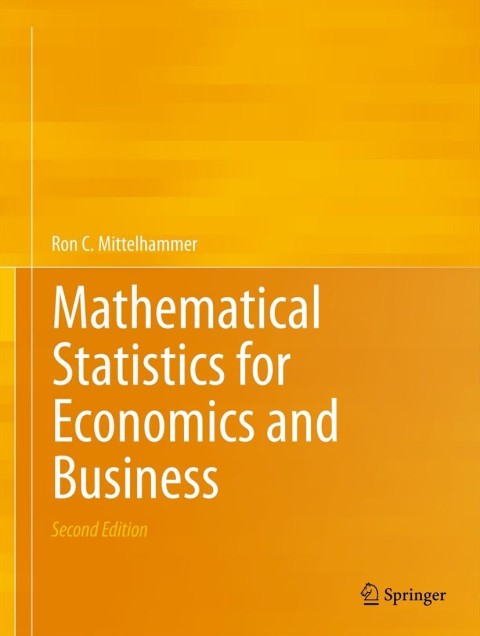The Pareto distribution (f(mathbf{x} ; theta, c)=c^{theta} theta x^{-(1+theta)} I_{(c, infty)}(x)) for (theta>1) and (c>0) has been
Question:
The Pareto distribution
\(f(\mathbf{x} ; \theta, c)=c^{\theta} \theta x^{-(1+\theta)} I_{(c, \infty)}(x)\)
for \(\theta>1\) and \(c>0\) has been used to model the distribution of incomes in a given population of individuals, where c represents the minimum level of income in the population. In a certain large state on the east coast the office of fiscal management is investigating a claim that professors at teaching colleges have average annual salaries that exceed the state average annual salary for middle management white collar workers, which is known to be \(\$ 62,471\). A random sample of 250 professors' salaries were obtained, and the geometric mean of the observations was found to be \(\left(\prod_{i=1}^{n} x_{i}ight)^{1 / n}=61.147\) where the \(x_{i}^{\prime}\) 's are measured in 1,000's of dollars. As part of the maintained hypothesis, the value of \(c\) is taken to be 30 .
(a) Express the mean level of income as a function of the parameter \(\theta\).
(b) Define a test statistic on which you can base a UMP level \(\alpha\) test of the null hypothesis \(H_{0}: \mu \leq 62.471\) versus \(H_{a}: \mu>62.471\).
(c) Define a UMP size 05 test of the null hypothesis \(H_{0}\) : \(\mu \leq 62.471\) versus \(H_{a}: \mu>62.471\). (Hint: Use a test statistic for which you can apply an asymptotic normal distribution and use the normal approximation).
(d) Test the hypothesis. Are university professors paid more than white collar middle management workers in this state?
Step by Step Answer:

Mathematical Statistics For Economics And Business
ISBN: 9781461450221
2nd Edition
Authors: Ron C.Mittelhammer





